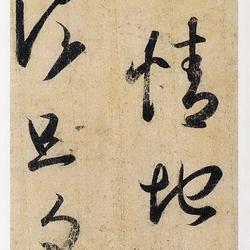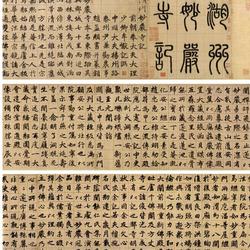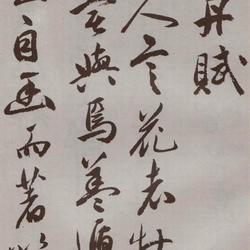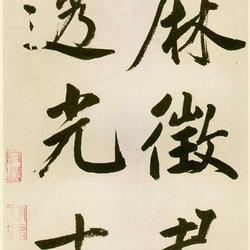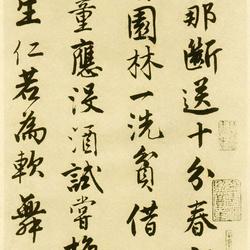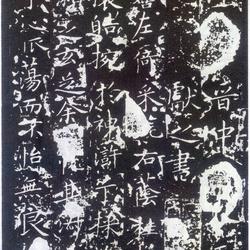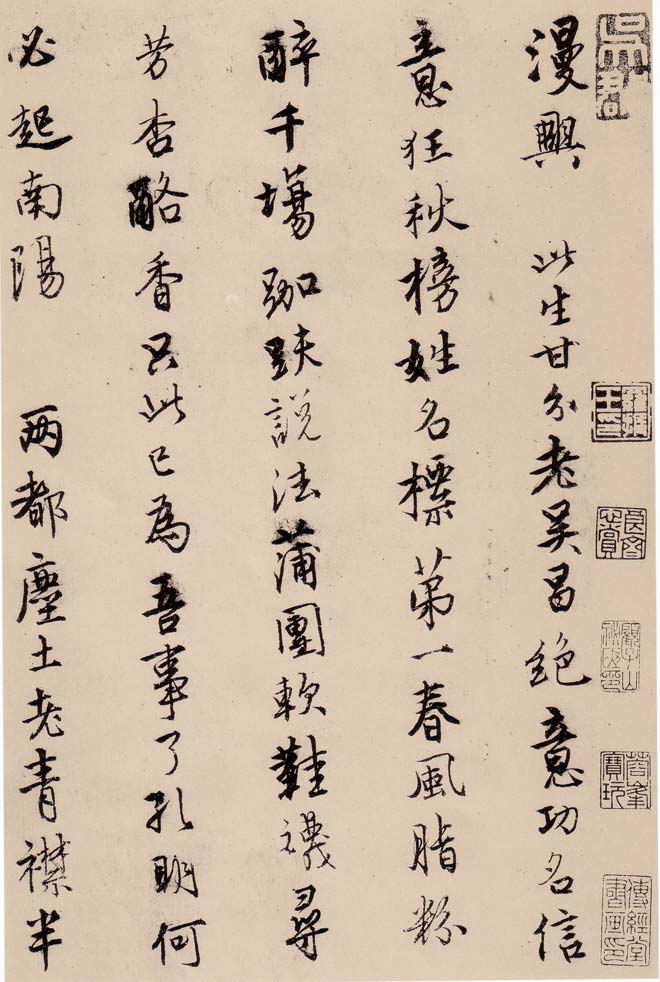
Tang Yin's "Manxing Ink Traces"
Appendix original book description:
Tang Yin was born in the sixth year of Chenghua in the Ming Dynasty (1470) and died in the second year of Jiajing (1523). His first nickname was Bohu, and later his nickname was Ziwei. In his middle age, he was named Liuru Jushi, Taohua Temple Master, Lu Born in the Tang Dynasty, he was an immortal official who escaped from Zen. He chose his studio as Xuetang and Mengmo Pavilion. He was from Wuxian County. Tang Yin came from a humble background. His father, Tang Guangde, started his business in the wine and restaurant business. When he was young, he worked as a handyman in a wine shop. Wen Zhengming often went to drink, so he became a friend. Zhu Yunming, who lived in Sanmao Pavilion at the time, valued Tang Yin's talents and learning, and they often communicated with him. . He married three times, and his wife was Xu Tingrui's second daughter, but she died young. In order to bring glory to the family, his father spent a lot of money to hire famous teachers for guidance. Tang studied diligently, so he became erudite and talented at an early age. At the age of sixteen, he ranked first in the scholar examination. However, due to his temperament, he returned to his hometown and married another wife. The girl was a lady in the eunuch family, and she was originally in the period of climbing the laurels and climbing the dragon. Unexpectedly, Tang was implicated in the imperial examination and was deposed, so the couple turned against each other. After divorcing his wife, they were in a miserable situation. Later, they married the Shen family. This girl was a virtuous and virtuous woman, and she finally found a good partner. . Tang Yin had a bumpy career in his career. After middle age, he built a house in Taohuawu, where he devoted himself to calligraphy, painting, poetry and wine, and converted to Buddhism. He took the meaning of life from Buddhist scriptures as "dreams, illusions, bubbles, shadows, dew and lightning" and named himself Liuru. . In the 13th year of Hongzhi (1500), Tang Yintian began to travel to famous mountains and rivers, including Lushan Mountain, Hengshan Mountain, Wuyi, Yandang, Huangshan, Jiuhua, Dongting and other places. The fortune of his foreign master provided him with a large number of sketches for his landscape paintings. material. After Tang Yin failed in the imperial examination, his family was very poor and he had to make a living by practicing art. When he was forty-five years old, Ning Wang Zhu Chenhao hired him with a lot of money because of his name. After Tang Yin was invited to Nanchang, he realized that there were many complaints from the people, and he He found out that King Ning wanted to rebel and usurp the throne, so he pretended to be crazy, so that he could get rid of his connections and avoid being killed. After returning home, his heart was ashen. When he was fifty years old, he was already old and sick, and could not paint often. One spring, the family ran out of firewood and rice, so he had to borrow rice from his neighbors to make porridge, and took it to Suzhou city for food. None of the paintings sold were sold, and the evening scene was very desolate. On the second day of December in the second year of Jiajing, this great and talented painter died of poverty, frustration and abjection. He was only fifty-four years old.
Tang Yin was not only good at poetry and prose, but also especially good at elixirs. He was also good at landscapes, figures, ladies, flowers and birds, bamboo and wood. It can be said that the name of his book is hidden by the name of his painting. The reason why he was able to achieve such achievements is related to his environment. Many collectors and painting shops in Suzhou provided him with opportunities to observe and learn. He also worked with famous painters at that time such as Zhou Chen, Shen Shitian, Wang Hao, Wen Zhengming, etc. Interactions with people, coupled with his intelligence in this rich cultural atmosphere, created the artistic success of a generation of painters. Tang Yin is also good at calligraphy. His books date back to the Jin and Tang Dynasties, especially thanks to Zhao Mengfu's brushwork. The dots are gentle and elegant, and the knots are slightly sideways. Although there are criticisms of being weak, there is a kind of aura between the lines. The book "Tang Yin Man Xing Mo Ji" contained in this volume is a self-written man poem written by a friend. It has more than a thousand words written in one go. The pen is precise and delicate, and the posture is tilted to the right and full of richness. The vivid posture is like that of an elegant man, strolling leisurely among the trees in Langyuan. It is very thought-provoking. The date and month are written at the end of the volume. However, from the elegant and natural style of writing, it is probably written by him in his later years. There are very few authentic works handed down by Tang Yin. In addition to "Album of Falling Flower Poems", "Manxing" is his main representative work, which is now photocopied and published for the benefit of calligraphy enthusiasts.

